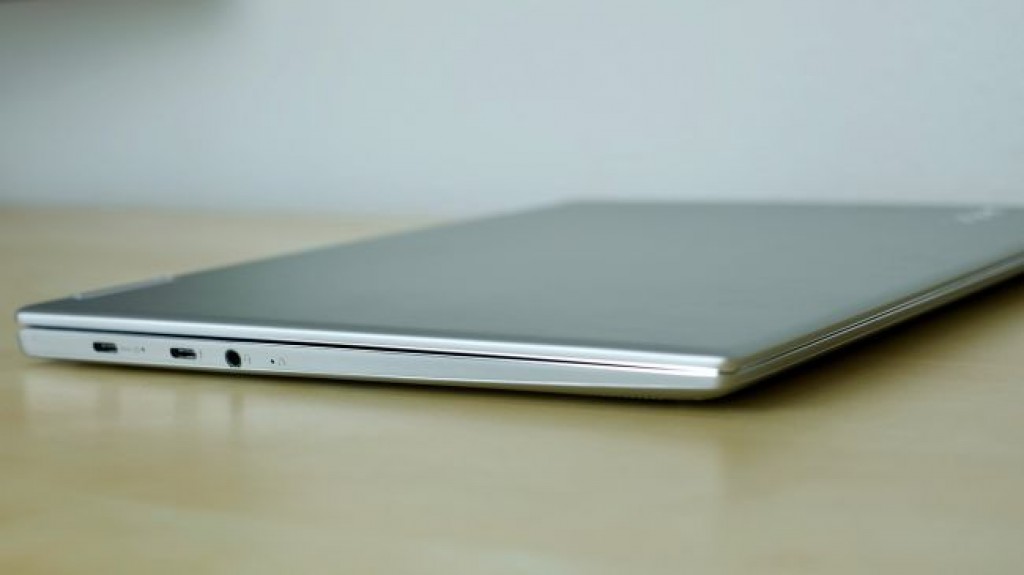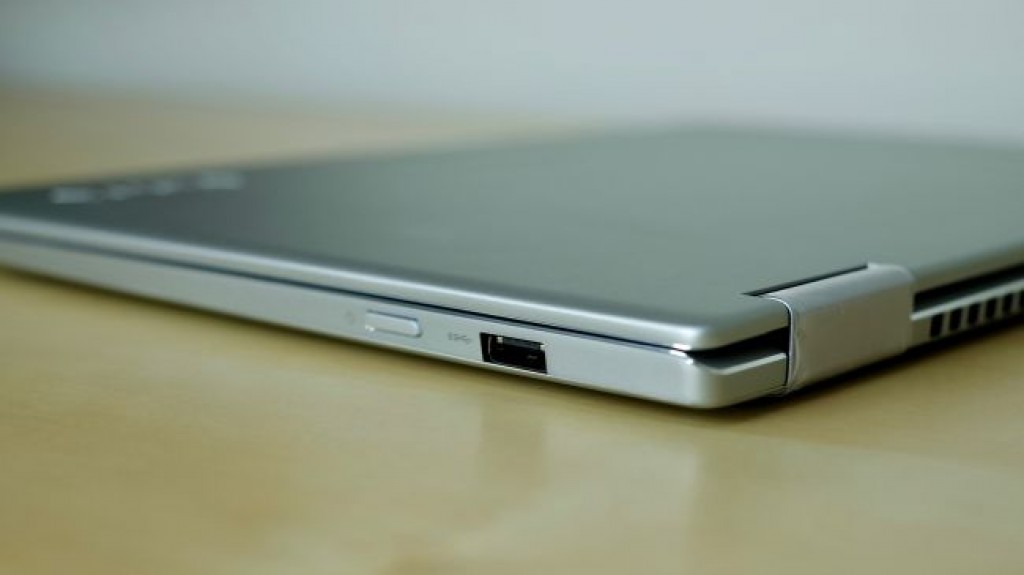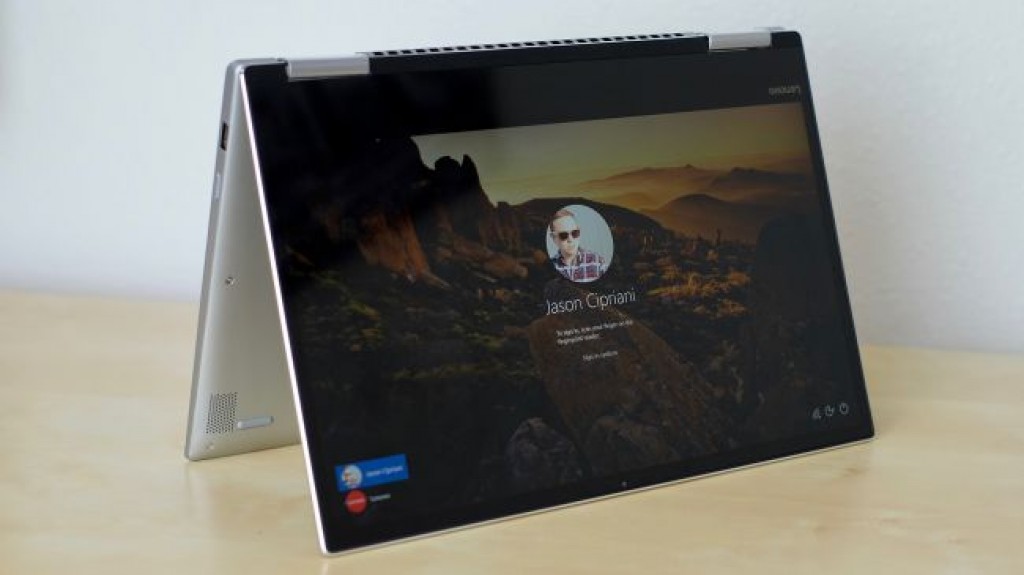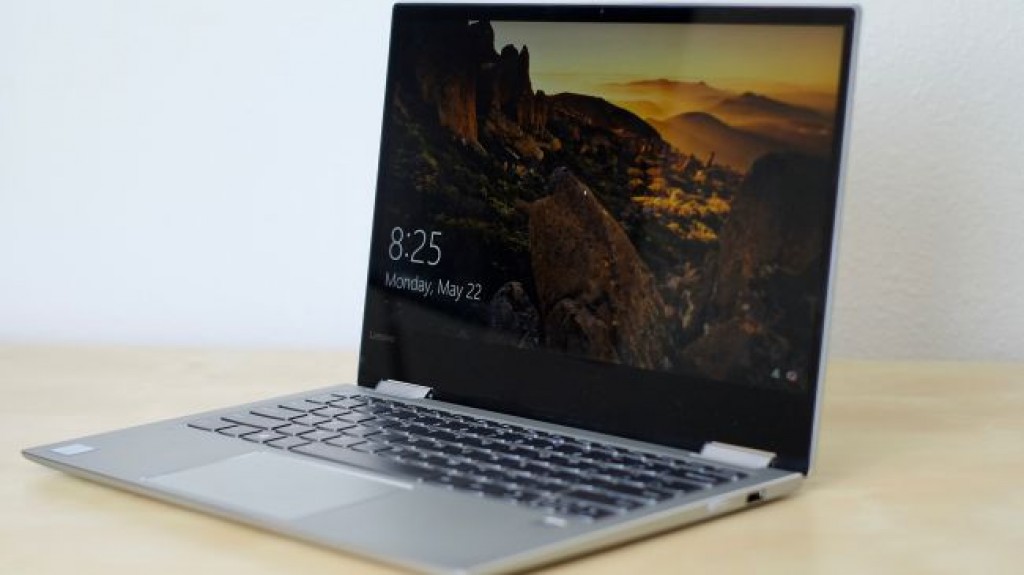
OUR VERDICT
- The Lenovo Yoga 720 is a budget friendly 2-in-1 capable of handling what’s thrown at it, so long as you’re not expecting all-day battery life.
FOR
- Sturdy hinge
- Crisp display
- Responsive keyboard and touchpad
AGAINST
- The cooling fans run a lot
- Only one standard USB port
- No memory card reader
Lenovo’s Yoga 720 is a 2-in-1 laptop/tablet hybrid that can easily fool you into thinking it was designed specifically to be either dedicated device.
A fingerprint sensor seamlessly integrates with Windows Hello, regardless of whether it’s in laptop mode or even with the keyboard folded to the back when it’s used as a tablet. Its keyboard and touchpad don’t require new muscle memory; from the moment you open the lid, the key travel and smooth pad just feel right.
For the first time in recent memory, if not ever, we found ourselves flipping between laptop and tablet mode without pause. Between using the Yoga 720 as a laptop to get work done and flipping the screen over to use this 2-in-1 to browse the web or binge the second season of Master of None, we found very little to fault with this device.

Price and availability
Lenovo is a global brand, and as such the Yoga 720 is found in the US, UK, and Australia. Though, the exact pricing and specs vary depending on your region.
For example, the Yoga 720 configuration we tested doesn’t appear to be available in the UK, with Lenovo instead starting the 720 UK product line with the i7 processor instead of the i5 found in the US and Australia.
In the US, Best Buy currently has the Yoga 720 discounted $100, to $729, from it’s regular $829 (about £638, AU$1,699) price. At either price point, the Yoga 720 is slightly more than the Asus ZenBook Flip UX360 and over $400 less than the Acer Spin 7.
In a market full of 2-in-1 devices, the Yoga 720 finds itself smack dab in the middle in terms of prices and specs.
This is partially due to the Yoga 720 boasting a 7th generation Intel Core i5 processor rather than a power saving-minded processor at this price point, as you would with the ZenBook Flip UX360. The benefit here is a boost in speed and performance and for not all that much more cash. That’s not a bad thing, save for battery life, which isn’t terrible, but it’s not what Lenovo claims.

Design
Outside of the of typical Yoga logo on the top of the clamshell, the Yoga 720 lacks any standout design feature. It looks just like most laptops or 2-in-1’s currently available, which isn’t necessarily a bad thing. However, if you’re the kind looking for something that’s different, the Asus Zenbook Flip UX360’s spun metal housing is sure to catch your eye.
Flanking the right side is the power button and a lone USB 3.0 port. Lone, as in, that’s the only full USB port you’ll find on the 720. On the left side, you will locate the mic, 3.5mm headphone jack, and two USB-C 3.0 ports. The USB-C port closest to the back of the unit doubles as a charging port, with an indicator light tucked nearby.
Weighing 2.9 pounds, the Yoga 720 is light enough to tote around between classes or haul on a plane for a quick trip.
A small, but worthwhile feature to call out is the feet Lenovo used on the bottom of the Yoga 720. Using the device in laptop mode on various surfaces, ranging from unfinished wood to a glossy desk, the Yoga 720 stayed put.

Fingerprint sensor on point
Almost immediately after opening the laptop, a small square just beneath the End key caught our eye. This square is the fingerprint reader, and it not only works as you’d expect, but its placement is an ideal spot for such a feature.
In comparison, we recently took a look at the LG gram 13 which had a fingerprint reader in the top left corner of the touchpad. While it wasn’t a 2-in-1 as the Yoga 720 is, the odd placement made the sensor challenging and unreliable to use.
With the Yoga 720, however, the arrangement makes it easy to quickly scan a finger on your right hand, regardless of the device’s orientation. We would fold the keyboard back and begin using the 720 in tablet mode, but instead of having to tap out a PIN code on the screen, a quick swipe of a finger across the sensor would unlock Windows 10.

Leading-class hinge
Bad news: We will continue to harp on the quality of the hinge, especially when it comes to 2-in-1’s until there are no complaints left.
Good news: The Yoga 720’s hinge leaves little to complain about even if it isn’t as fancy as the watchband hinge found on the Lenovo Yoga 910. Instead of a display that wiggles and moves as you type or touch a digital button, there’s very little movement.
Good job, Lenovo. Now if we can convince others to follow your lead.
We have no complaints about the Yoga 720’s overall performance. During our testing, we used it as we would our personal daily device.
From browsing Twitter to sending emails, updating apps, minor photo editing, and streaming YouTube how to videos for random home DIY projects, the experience was without any major hiccups.
At no time did we feel as if the Yoga 720 was underperforming with its beefy processor. And, for the most part, the benchmarks back that claim up. The Yoga 720 nearly doubled the 3DMark results of the Zenbook Flip UX 360 and Acer Spin 7, for instance.

One thing we did notice was how little activity was required before the device’s fans would begin spinning. At one point, just opening the Facebook page in Chrome was enough to trigger the cooling fans after a cold boot. That’s one downside of not using a fanless Core M processor.
On the other hand, the device never feels hot to the touch – you just have to get accustomed to the constant hum emitted by the fans. Thankfully, the speakers were plenty loud when streaming music or watching videos, regardless if we used it on our lap or a flat surface.
Battery life
Lenovo touts 8 hours of battery life from the Yoga 720, and we got close to that claim in our movie test, coming in at 7 hours and 4 minutes. Our real world testing found nearly the same results, coming in just shy of the 8-hour total use mark when switching between modes and processing load.
We liked
The Yoga 720 is one of our favorite 2-in-1s to date. Between reliable performance, ease of switching between laptop and tablet mode, and putting the fingerprint sensor where it makes sense in both configurations, it’s clear Lenovo paid attention to the finer details.
We disliked
The Yoga 720’s battery life isn’t horrible; it’s just disappointing it doesn’t live up to the 8-hour sticker on the box.
And for those who’ve yet to fully convert (or should we say invest?) to USB-C accessories and cables, the single USB port and lack of a memory card reader will surely get annoying. USB-C may be the future, but the transition is still painful, especially to our bank accounts.

Final verdict
The Lenovo Yoga 720 excels as a mid tier 2-in-1 device. As we’ve already stated, the ease of switching between modes and the overall performance regardless of configuration should be super appealing to those who don’t need an incredibly powerful machine.
The reliability of the fingerprint reader makes it easy to skip right past the lock screen without much fuss.
It’s just too bad there isn’t another USB port, or at the very least a dedicated memory card reader to help users ease into the USB-C transition. As it is now, you’re likely going to need a few dongles and cables in order to connect your camera, smartphone and an external monitor.
That said, at $829 ($729 if you happen to catch it on sale) the Lenovo Yoga 720 is hard not to recommend. The fast performance, lightweight, solid construction, and a decent battery of this hybrid machine are well worth the cost.
Sоurсе: techradar.com









































